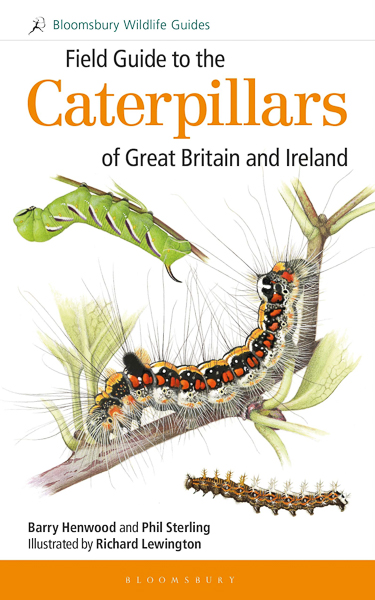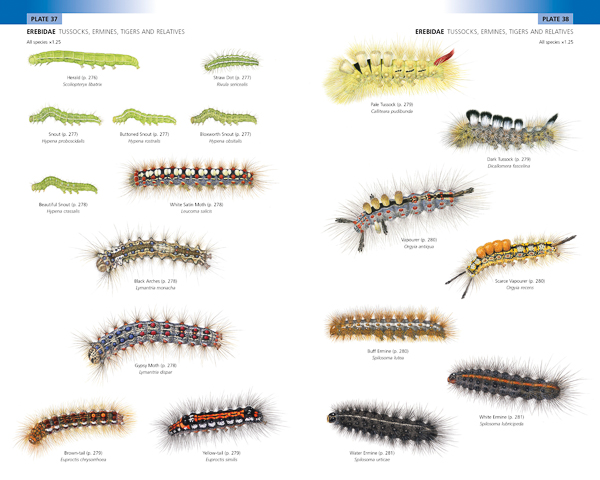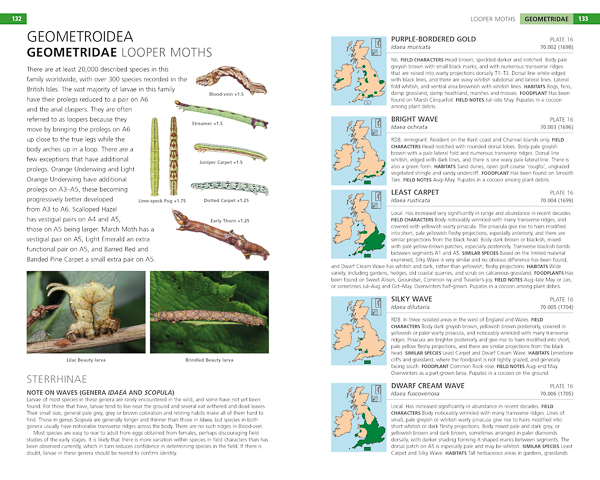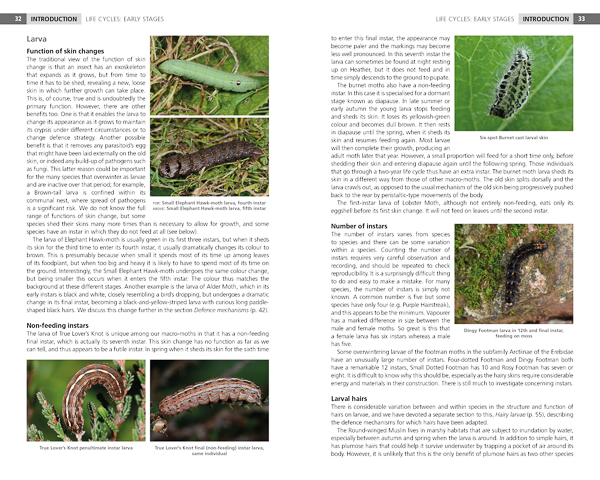 |
"A much-needed guide - you can't truly understand a moth or a butterfly without first getting to know the caterpillar." - Nick Baker. This beautifully illustrated field guide covers caterpillars of the moth and butterfly species that are most likely to be encountered in the British Isles. The comprehensive introduction covers how to study caterpillars and provides a window into their diverse natural histories, while the species accounts cover status, field characters, similar species, habitat, foodplant and field notes, and are accompanied with up-to-date distribution maps.
Field Guide to the Caterpillars of Great Britain and Ireland is the culmination of a monumental undertaking - describing and illustrating the caterpillars of 832 species of (mainly macro) moths and butterflies. Not since Jim Porter's Colour Identification Guide to the Caterpillars of the British Isles, published in 1997, has such a breadth of coverage been attempted. Of course, this new work includes the most recent information and acknowledges losses and gains, changes in distribution and the like.
As with similar guides from Bloomsbury, the first thing to jump out at you is Richard Lewington's superb illustrations, and I'm sure that many readers will acquire this book based on that aspect alone. The illustrations cover 64 plates (pages) of this 448-page work, grouped together in the middle of the book which, as a field guide, will allow the reader to quickly home in on a likely candidate when attempting to identify a caterpillar.
 |
The illustrations are, however, just one aspect of this work, and my hat goes off to Barry Henwood and Phil Sterling for describing the caterpillar of each of the 832 species in a compact, yet very informative, amount of detail, including status, abundance, appearance ('field characters'), similar species, foodplants and 'field notes', that includes hints such as when to find the caterpillar, feeding habits, and pre-pupation behaviour such as the creation of a cocoon. Each description also includes a thumbnail distribution map that provides a rough indication of where a species is found. The species are organised according to Checklist of the Lepidoptera of the British Isles, with a summary of each family also provided. Photos are also used judiciously throughout, especially when highlighting a particular species or characteristic.
 |
There are also 60 pages or so of introduction, which contains a plethora of 'juicy' nuggets, with something to learn on every page, especially for moth-ers which is (given the coverage) where the balance of this book lies. For example, in the section 'How to find larvae', there is a hint that "A Foxglove wilting at the top is likely to have a larva of Frosted Orange inside the stem". We are also treated to some incredible facts - for example, some 'parthenogenetic' micro-moths are asexual, with females (there are no males) laying viable eggs without mating. Also, the case-bearer micro-moth Coleophora albella lays larvae rather than eggs, a phenomenon known as 'larvipary' that is more-common in certain flies. There are also species that have non-feeding instars. I could go on, and an expanded introduction could make for a book in its own right.
There are also several useful appendices, including those that focus on groups that are notoriously difficult to tell apart in their larval stage, such as Carpets and Pugs. Another appendix correlates foodplants with the species that feed upon them. All in all, anyone finding a caterpillar will be able to home in on their subject using a wide variety of tools, from appearance (using the plates), to plant (using the appendices), to time of year and other characteristics (using the species descriptions). This book therefore brings together a wealth of information that will benefit anyone that is at all interested in knowing what they are observing - from the casual nature lover to those undertaking a detailed study - and having this guide to hand is a 'no-brainer'.
 |
The book's focus is on final instar larvae (including different forms) which, from a purely practical point of view, is eminently sensible - if we were to take an average of 5 instars per species, this would otherwise mean a work that covered 4160 subjects of interest (832 species x 5 instars), and a book 5 times the size! This does, of course, mean that the book may not always provide the guidance needed when confronted with an early-instar larva. Also, the length of each final-instar larva is not explicitly provided, with the authors stating that this is not a particularly useful diagnostic when there is much variability as the final-instar larva grows, and then shrinks prior to pupation. However, the length (and relative size) can be inferred from the illustrations, with each plate providing an indication of magnification.
On a related note, given that this book is about caterpillars, I was rather surprised that each species description does not include the number of instars that the species goes through (even if this is variable or unknown), especially since this fundamental characteristic is discussed in the introduction. It would, if nothing else, provide some guidance to those looking to help better-understand each species, and where there are gaps in our knowledge - something that is encouraged (through captive rearing) in the introduction. In addition, if the larva overwinters, then knowing the overwintering instar would also be a useful addition.
In summary, this book is a great contribution to our collective knowledge, and I hope it will encourage all enthusiasts to take a greater interest in the immature stages, and caterpillars especially. It will no doubt become one of the 'standard' reference works for anyone that is at all interested in the moths and butterflies of Britain and Ireland.